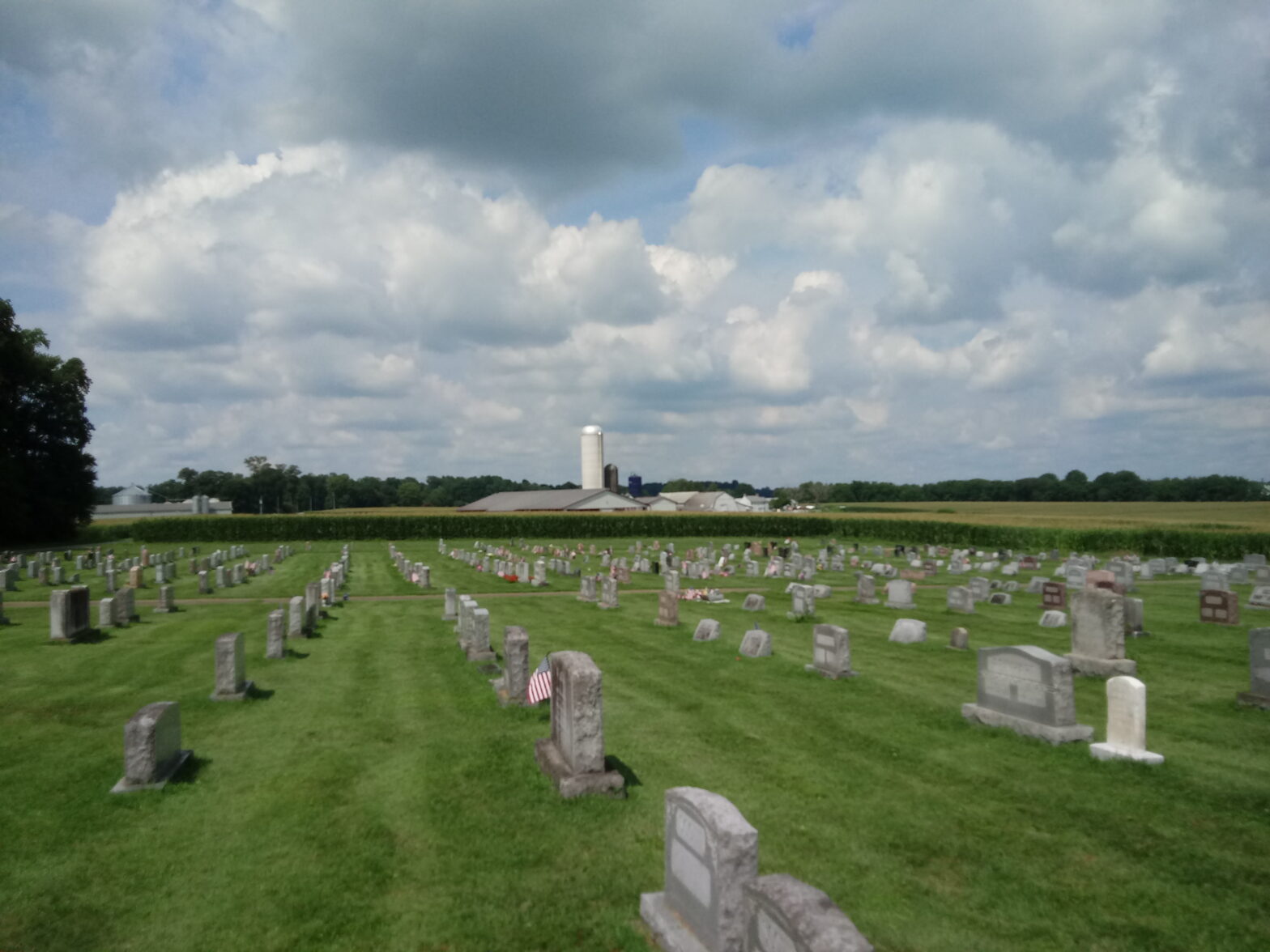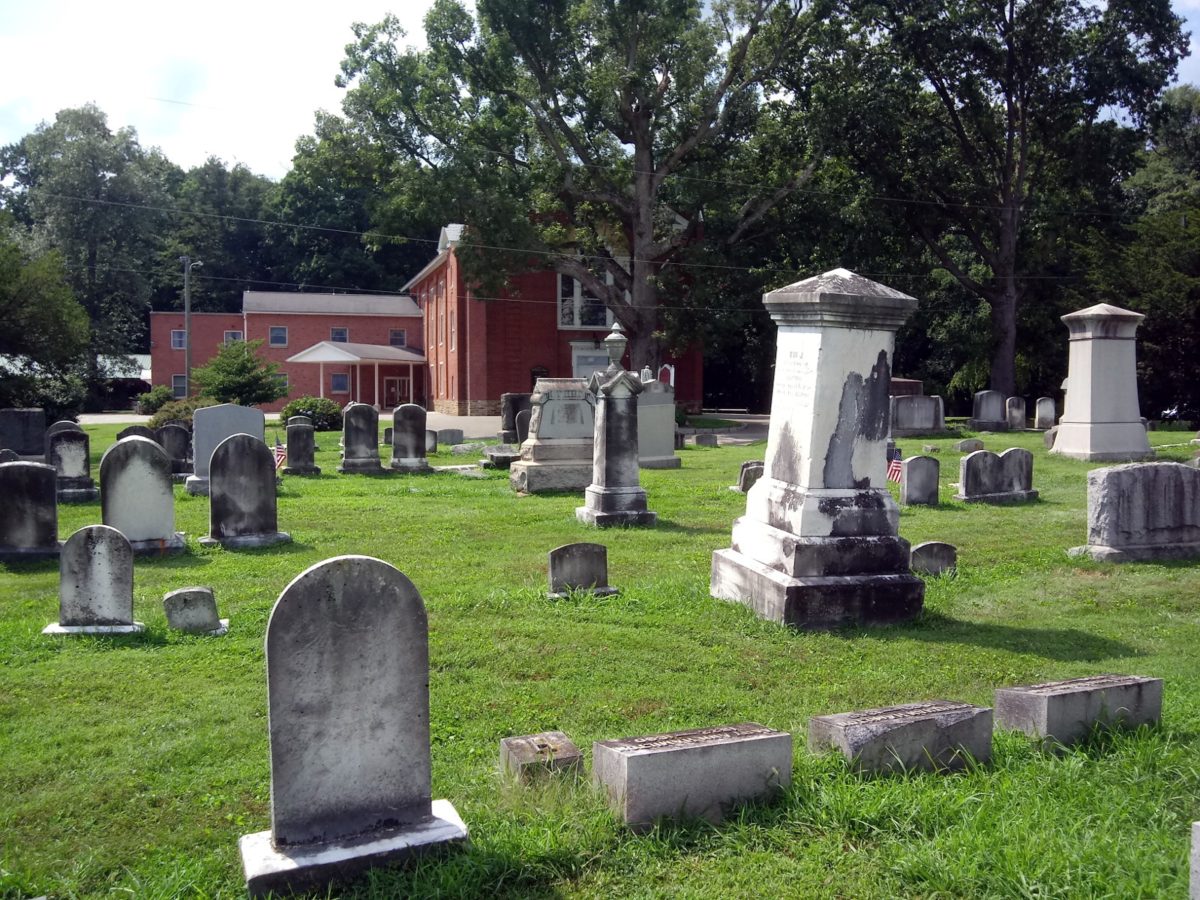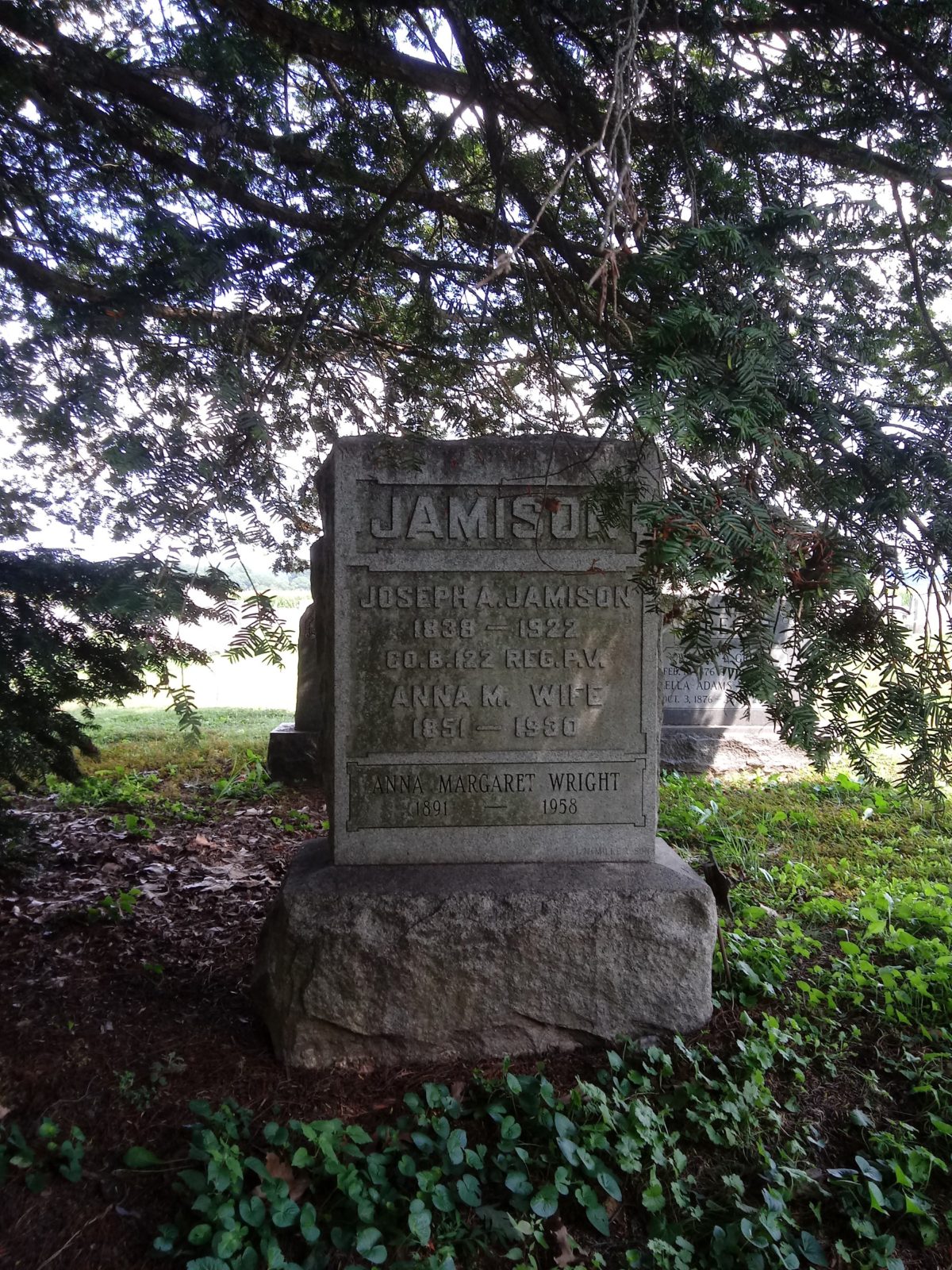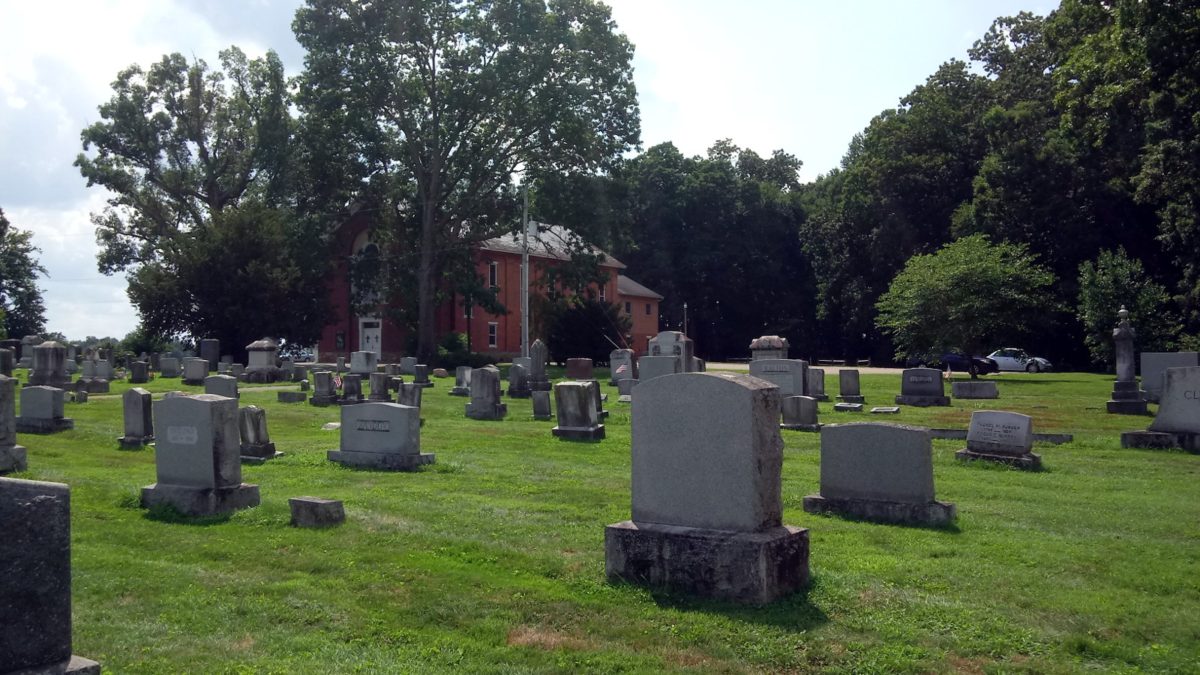Yesterday afternoon, since it was sunny and nice, I decided to go for a drive into Lancaster County and check out a cemetery. My great-great-great-grandparents are buried at the Millersville Mennonite Church, about twenty-five miles away, which is closer than Diamond’s offices, but I’ve never gone to look for myself.
The reason? Lancaster isn’t far — I live as far away now, to within a mile or two, from the Barnes & Noble on Fruitville Pike as I did twenty years ago when I lived in Atglen, and I thought nothing of going to B&N then — and Millersville is closer than that, but just going across the Susquehanna in that direction feels like it’s so much farther away than that.
Still, I had no plans for the day, and going to visit a cemetery is an easy way to get out of the apartment and still socially distance.
The drive was pleasant, even if the most direct route, at least on the York County side, isn’t the best due to some funky intersections and right-of-ways. There was a fair bit of traffic, and in about forty minutes I arrived.
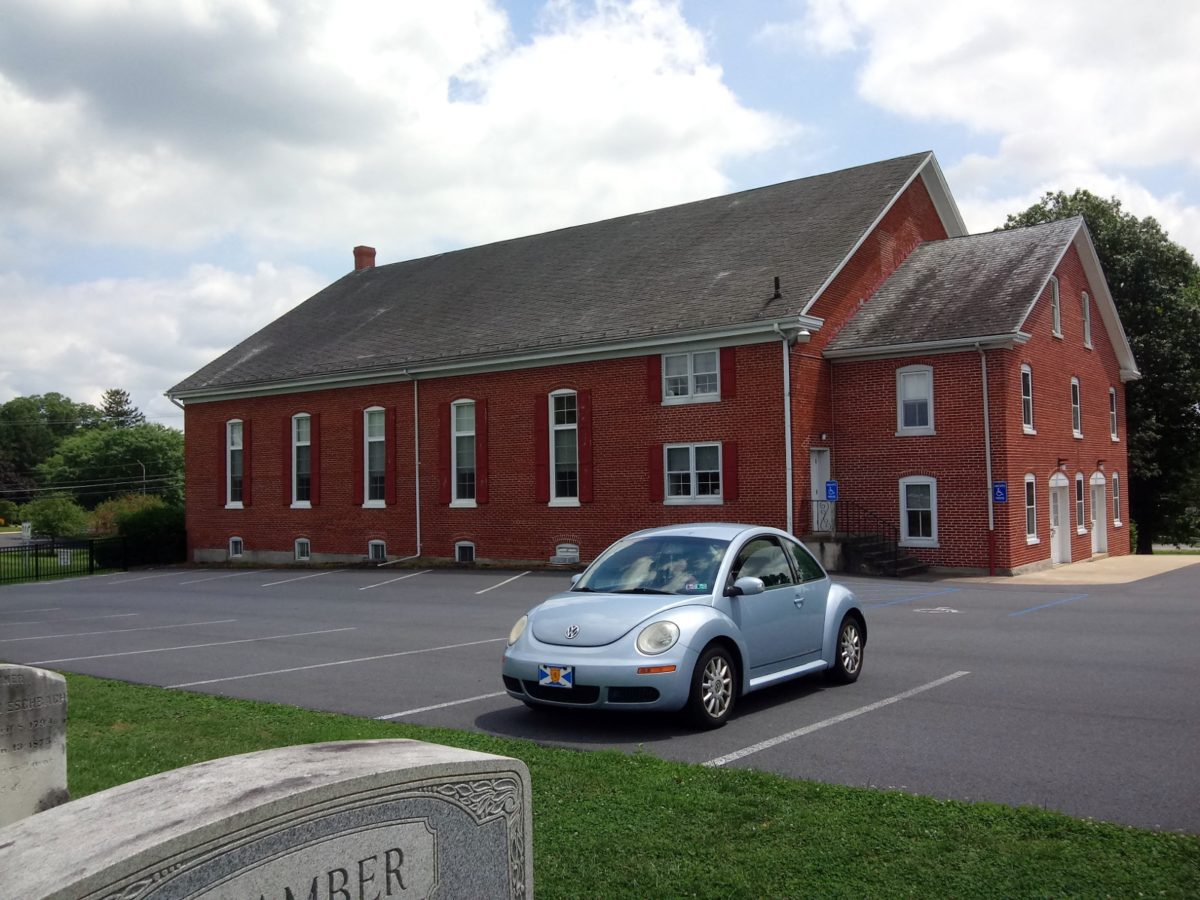
I’d looked at the cemetery on Google Maps, so I knew it was extensive. I also knew from photographs on Find a Grave that what I was looking for was going to be close to the road; the power lines were clearly visible in photographs there, not to mention a passing dump truck.
The cemetery was dense. The graves were tight, and almost all appeared to be marked with headstones as there were so few gaps where unmarked graves would be.
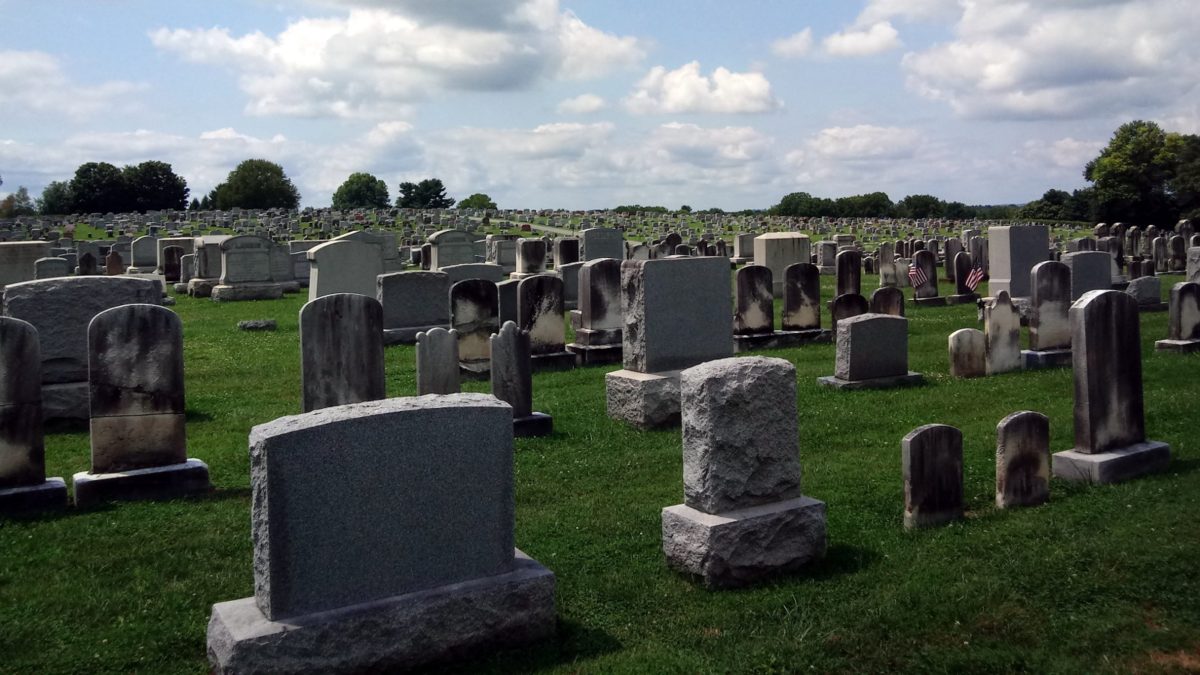
One thing I noticed, there was a general plainness to the stones; cemeteries have a certain style, and the style at this one was to be modest and unremarkable, which made the stones that were different — elaborate carvings, angels, modern styling — stand out all the more.
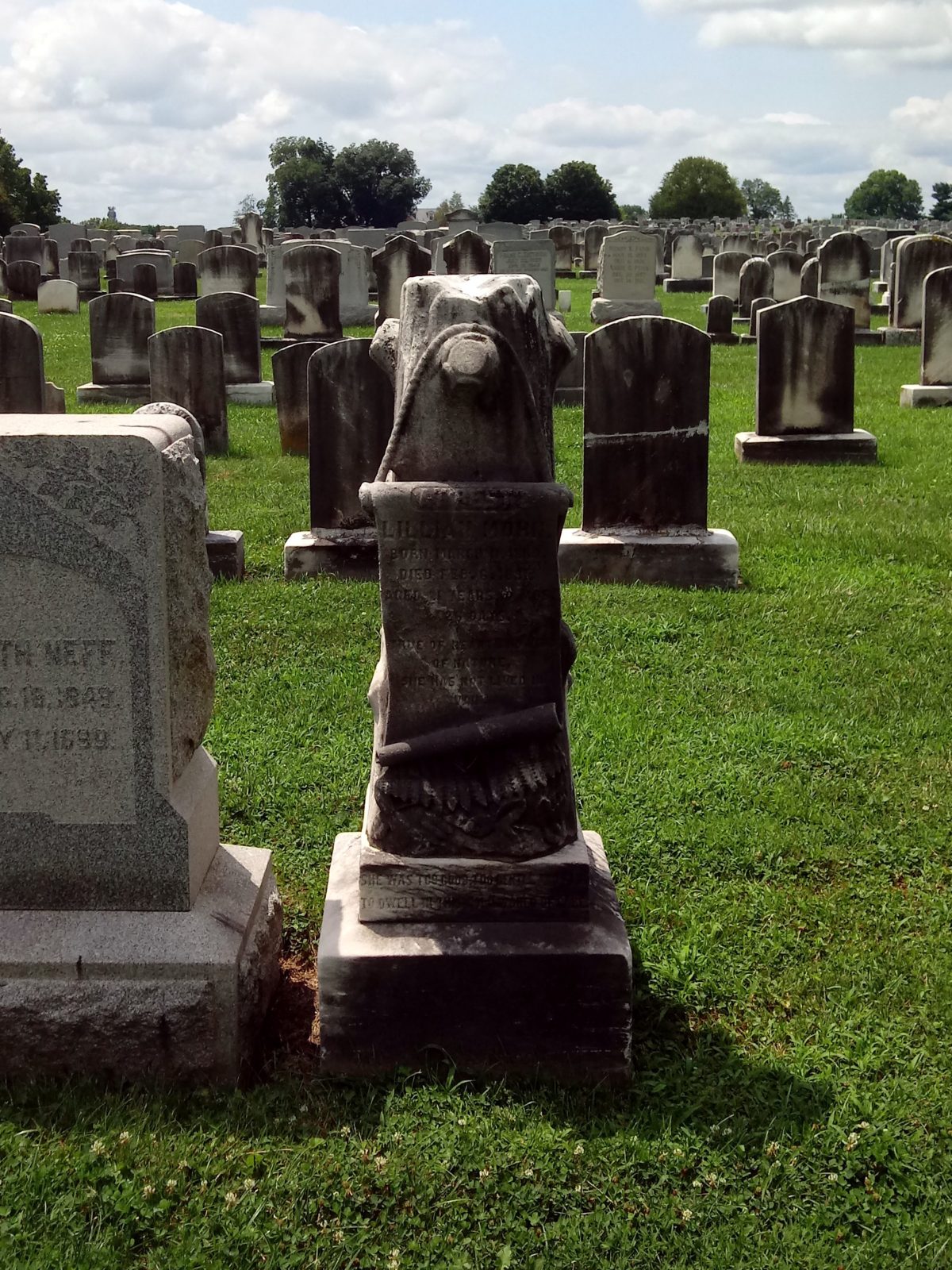
A unique headstone, like a carved tree with a scroll hanging from the stump of a limb 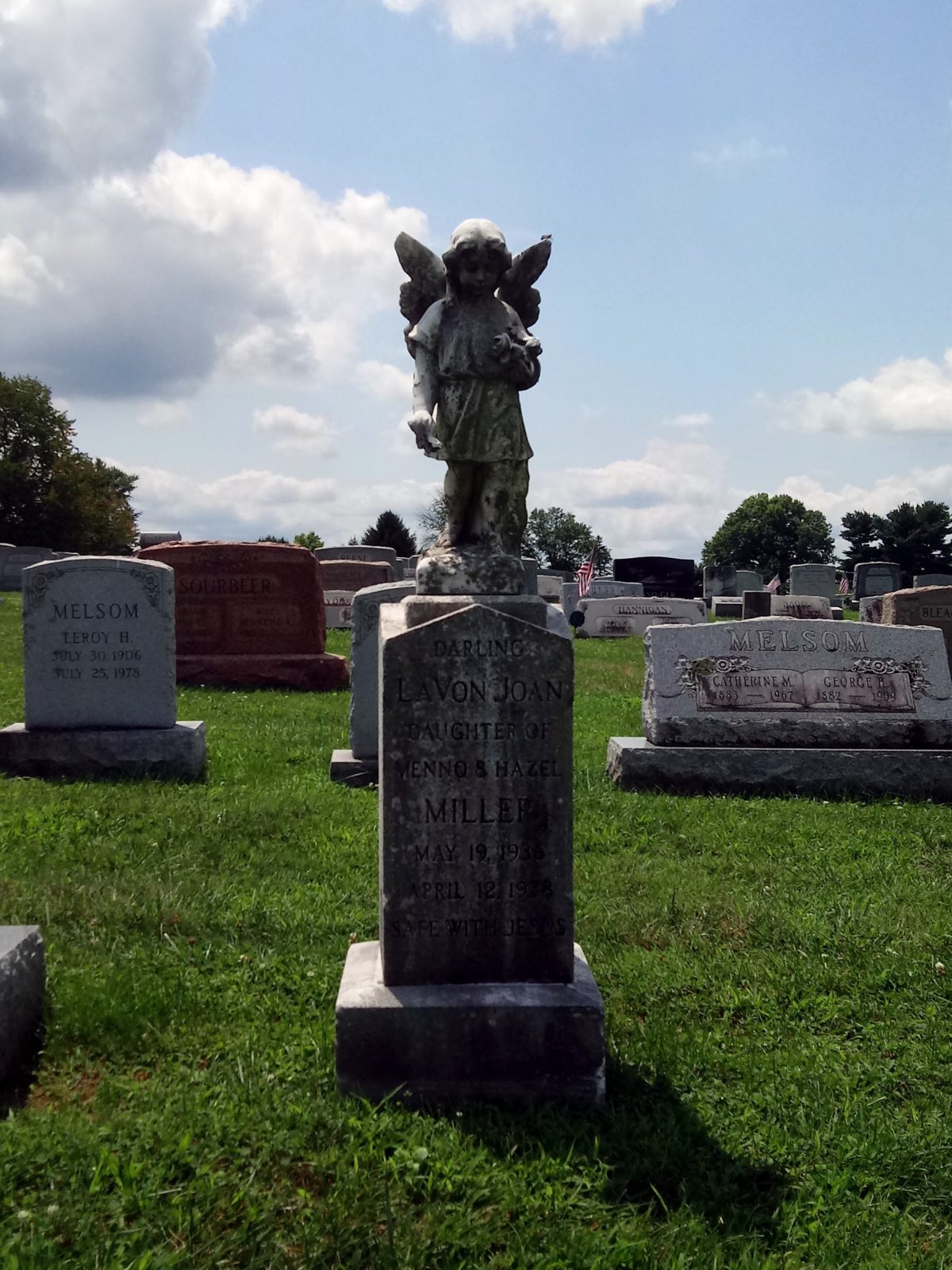
A headstone decorated with an angel
I found what I was looking for — the graves of my great-great-great-grandparents — fairly quickly. Power lines in the photo I’d seen indicated they were near the road, and there were street lamps in the photo that were distinctive. Five minutes’ searching, when I decided to look, brought me to them.
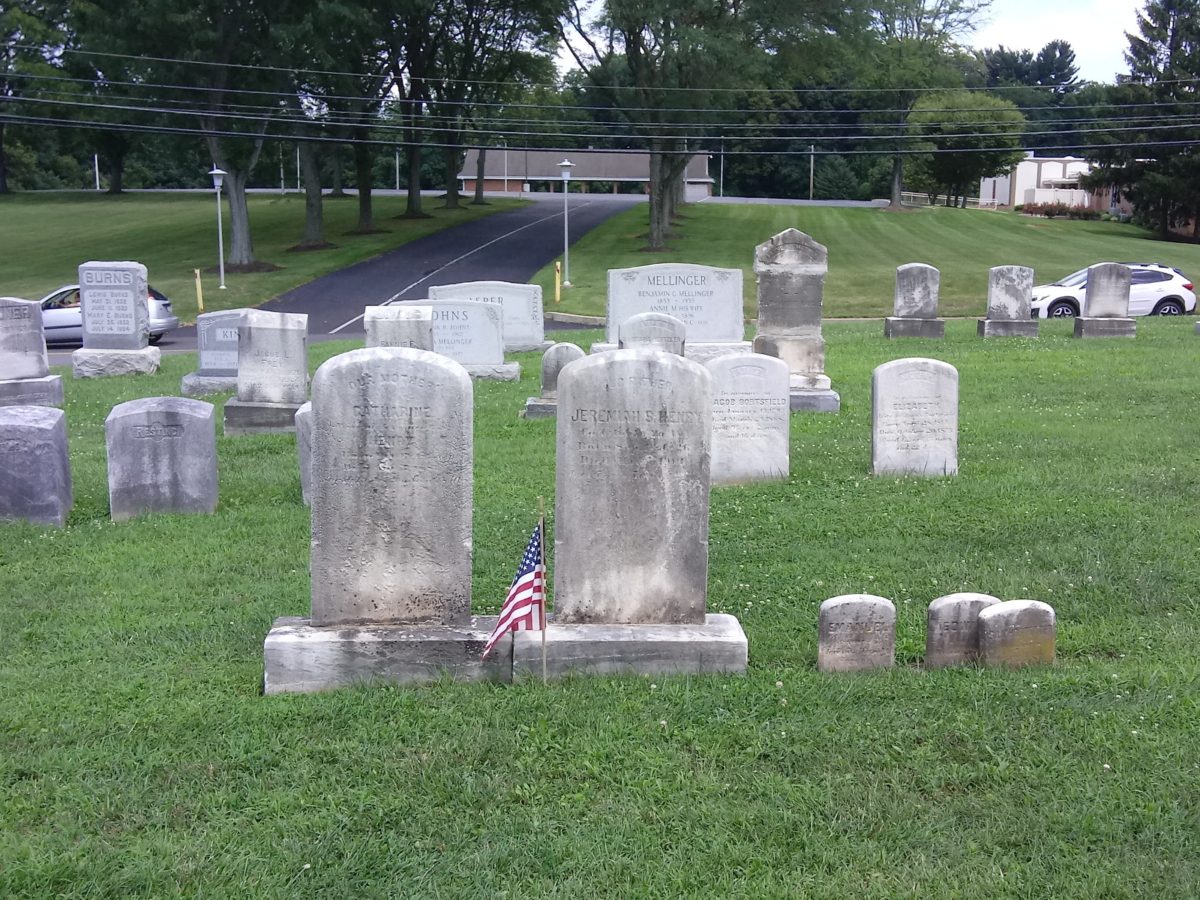
I know very little of Jeremish and Catherine Henry. His great-grandfather immigrated to the Pennsylvania colony from Germany in the mid-1700s. His father and grandfather appear to have been Lutherans — they’re buried at a Lutheran church to the west of York, in Abbottstown.
Jeremiah himself was a Civil War veteran. He was almost thirty-five when the war broke out, and he served from the summer of 1862 to the summer of 1863, mustering out shortly after Gettysburg, which he did not participate in. His military career is notable for having fallen in a creek, apparently during the Peninsula Campaign. (I have a great-great-great-grandfather who fought on the Confederate side as well; he’s buried in North Carolina’s Edgecombe County.)
Of his wife, Catherine Meiskey, I know absolutely nothing.
The two small headstones to the right of Jeremiah are their children, Emanuel (almost three) and Edward (aged one day). The askew headstone against Edward’s in unrelated; it belongs to a Hostetter.
I wandered around the cemetery for a good hour, and maybe covered a third of it.
Since I was on the eastern side of the Susequehanna, I decided to see how far away I was from Little Britain, where Jeremiah and Catherine’s daughter Susanna — and my great-great-grandmother — is buried. Nineteen miles, Google Maps told me, and about thirty-five minutes away. Since nothing was pressing, I headed south.
I had been to Little Britain Presbyterian Church once before. It was an unplanned visit — I happened to to driving that way, on my way to Cecil County for the Fair Hill Scottish Games in early 2019 — and at some point I wanted to go back, as I knew that there was more to find there than just my great-great-grandparents. (I was glad later that I stopped, even unprepared, as I found nothing I was looking for in the other cemeteries I explored that day.) I had thought about going during the the pandemic quarantine period, as I did to cemeteries in Baltimore a few times, but Lancaster County stayed yellow for a long time and I felt it was too much of a risk.
The trip south took me across Pennsylvania 372, the same road I lived on in Chester County twenty years ago. It was lovely country and a lovely day for a drive. Donald Trump flags were as common as American flags along 272. I stopped at a Sheetz along the way, buying some iced tea and a turkey sandwich to eat later.
To my surprise, I was not alone at Little Britain Presbyterian Church. An older man was wandering the cemetery grounds with a camera. He was from Maryland, and he told me later — from a distance, when I was sitting on the church’s front step eating my lunch — that photographing the graves of veterans is a hobby. “I like it when I find Revolutionary War graves that are still readable,” he said.
I only vaguely remembered where my great-great-grandparents Isaac and Susanna Brown were buried, so I had to do some hunting to find them.
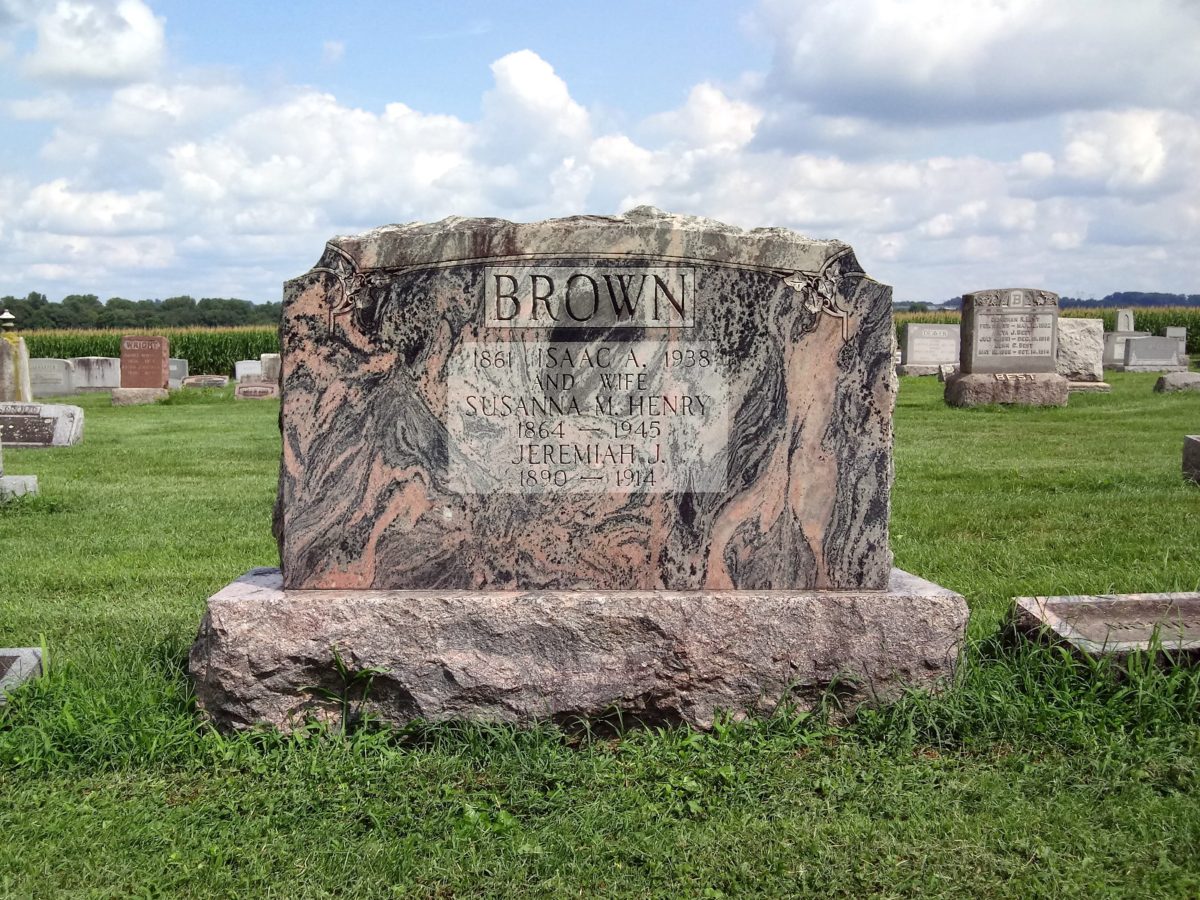
As with Susanna’s parents in Millersville, I know little of Susanna and her husband. I’ve seen photographs of them. They were farmers. Isaac, at least, was a Republican; to the left is the stone for their son Theodore Roosevelt Brown, and I’m descended from their son Charles Benjamin Harrison Brown. (I visited his grave in April 2018.) Susanna, I know, attended school in Lancaster in the 1870s, as I’ve seen a class picture of her in her childhood.
The cemetery, as you can see in the background, stands in the middle of farm country. It was generally flat, the horizon far off, and the sky seemed to go forever.
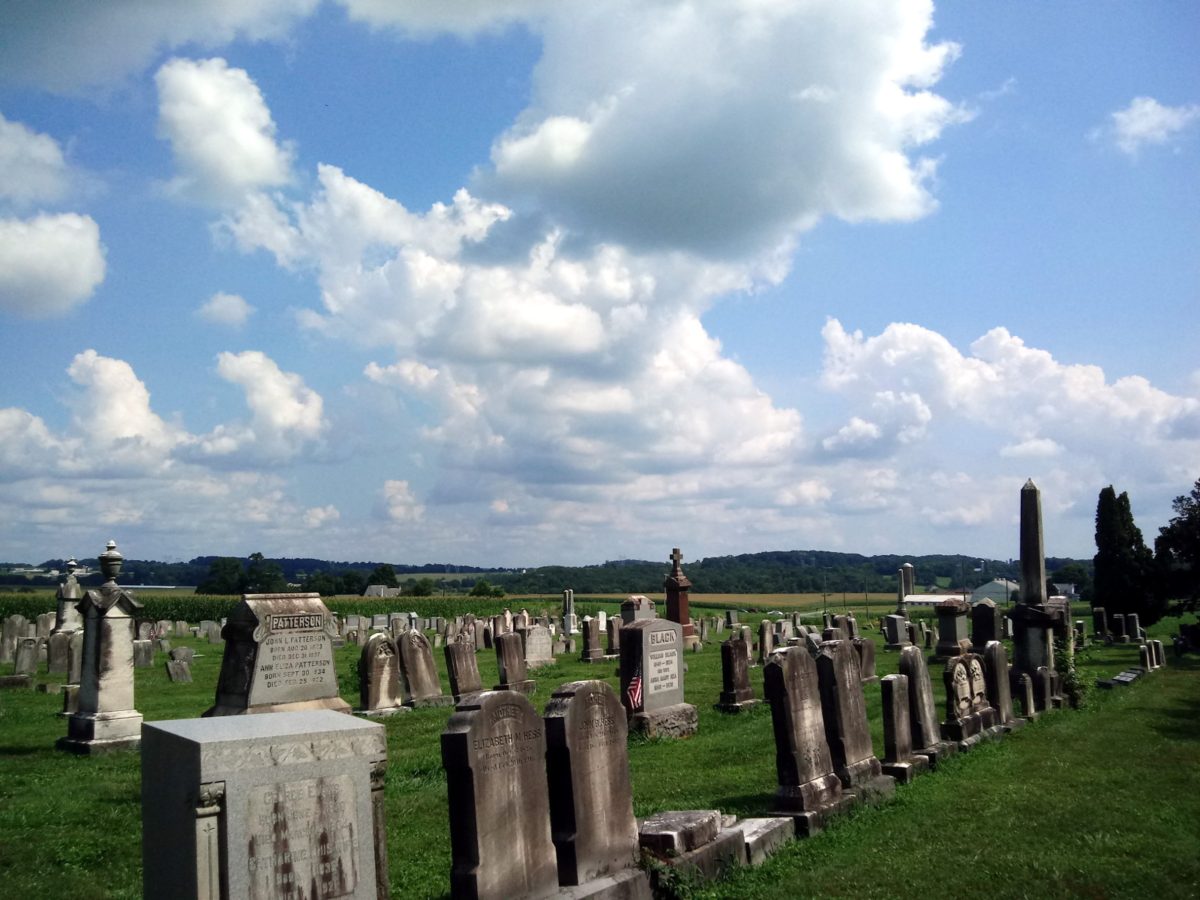
Looking southeast from the cemetery at Little Britain Presbyterian Church 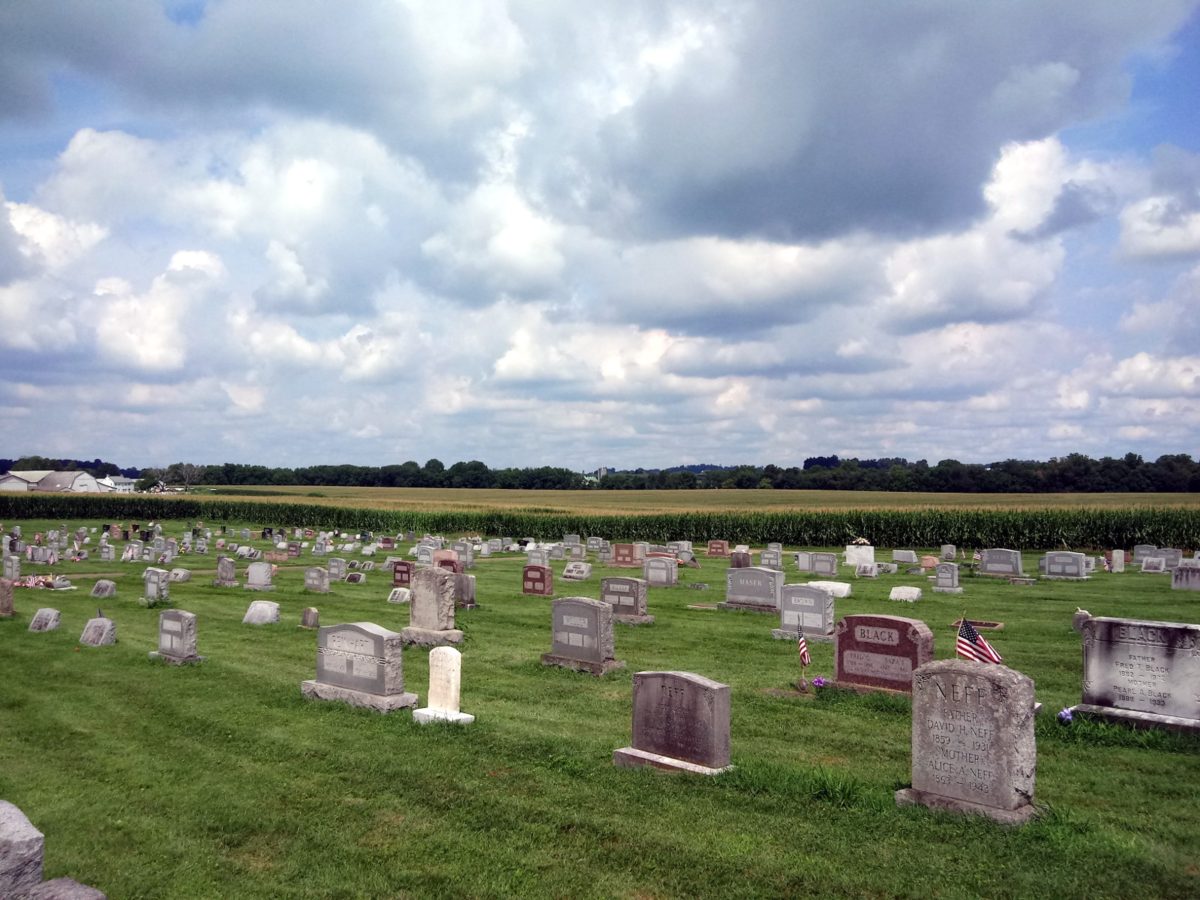
Looking northeast across the cemetery and fields beyond 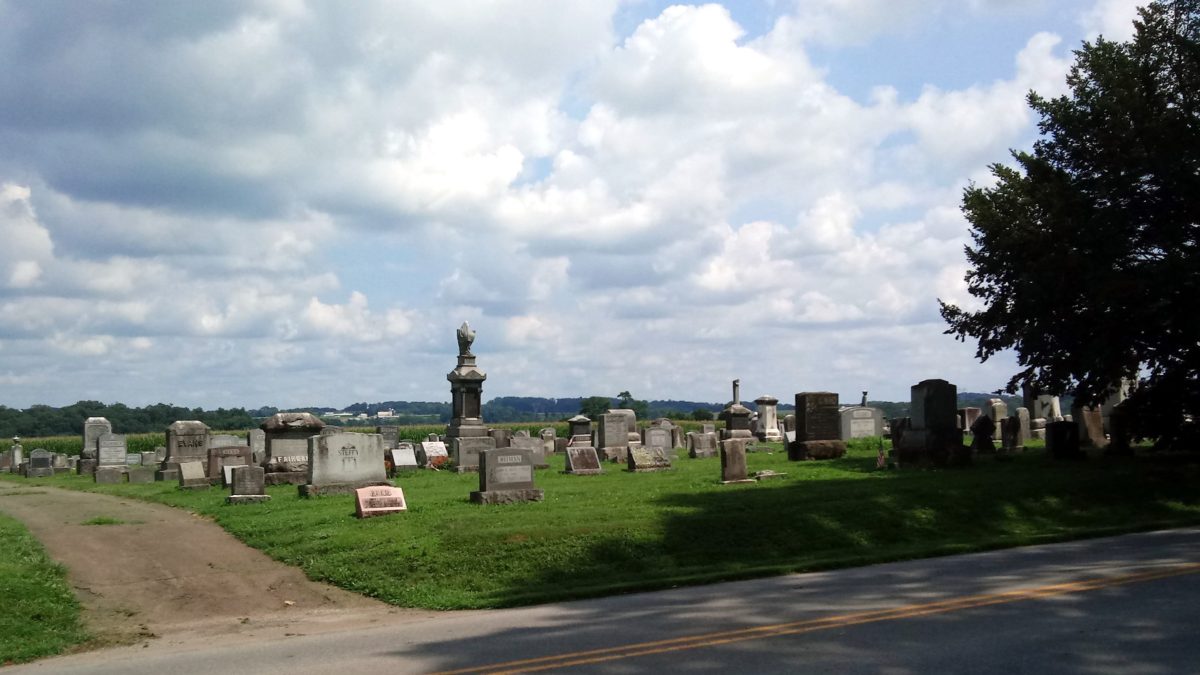
The cemetery at Little Britain Presbyterian Church.
One of the things I had missed during my visit last year was that my great-great-great-grandparents — Isaac Abel Brown’s parents — are buried here as well. I had not known that off the top of my head, so I didn’t look for them last May. With the knowledge and more time, I was determined to find them.
It took a little searching. Every Brown headstone I looked at until I found the one.
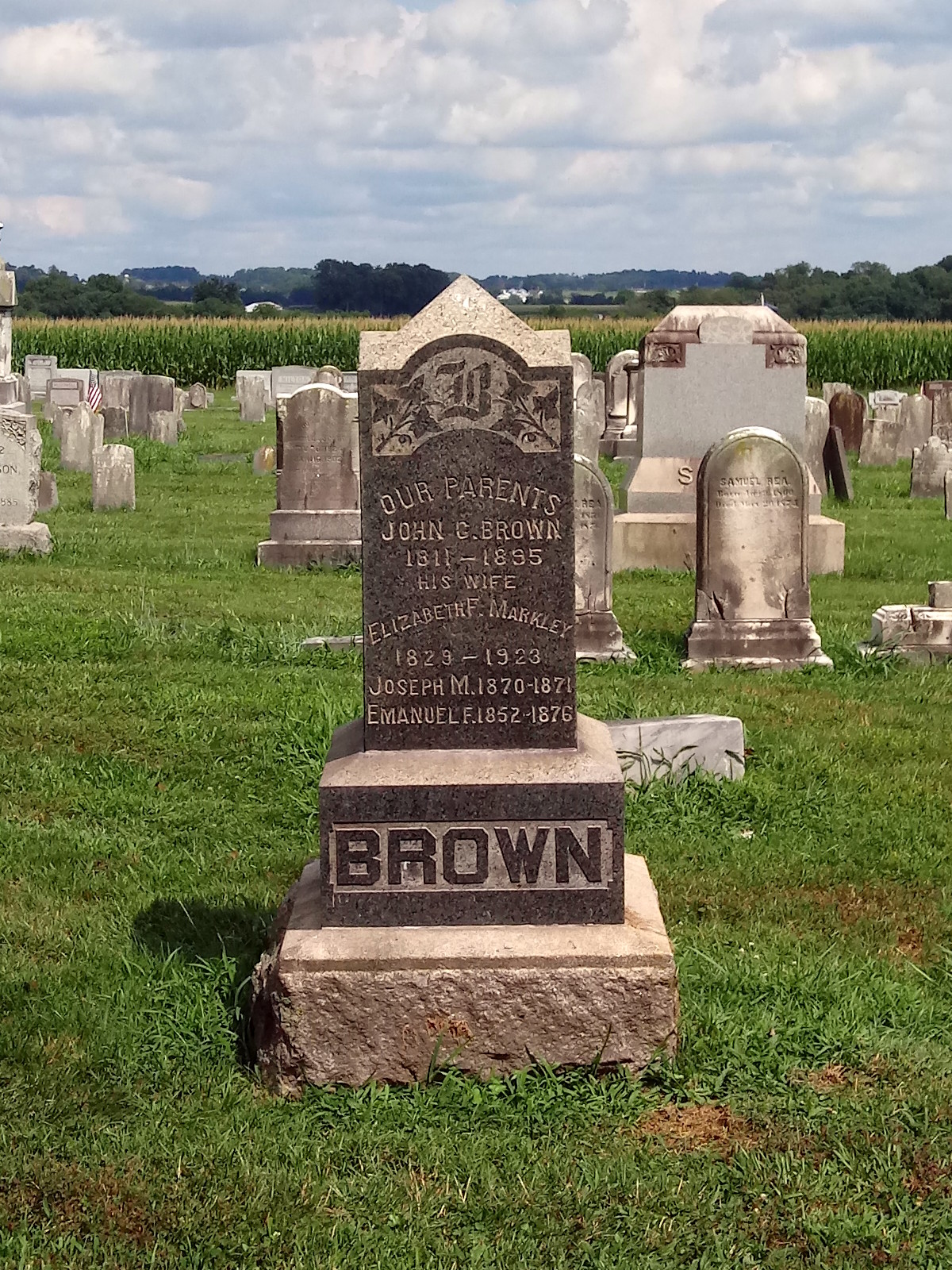
I know even less of John and Elizabeth Brown than I do of their son. Farmers. That’s all I’ve got. Even John Christian Brown’s ancestry isn’t quite certain. He may be descended from some of the early Pennsylvania Quakers — who actually resided in what is now Cecil County, Maryland, as there was a border dispute between the two colonies — not to mention an indentured servant, Mary Coale, who was kidnapped from Scotland in the late 1600s.
There was, in fact, a Revolutionary War veteran buried here — Major John Scott. I’ve never heard of Major John Scott, but Find a Grave has a nice biographical sketch. This monument was erected almost fifty years after his death.
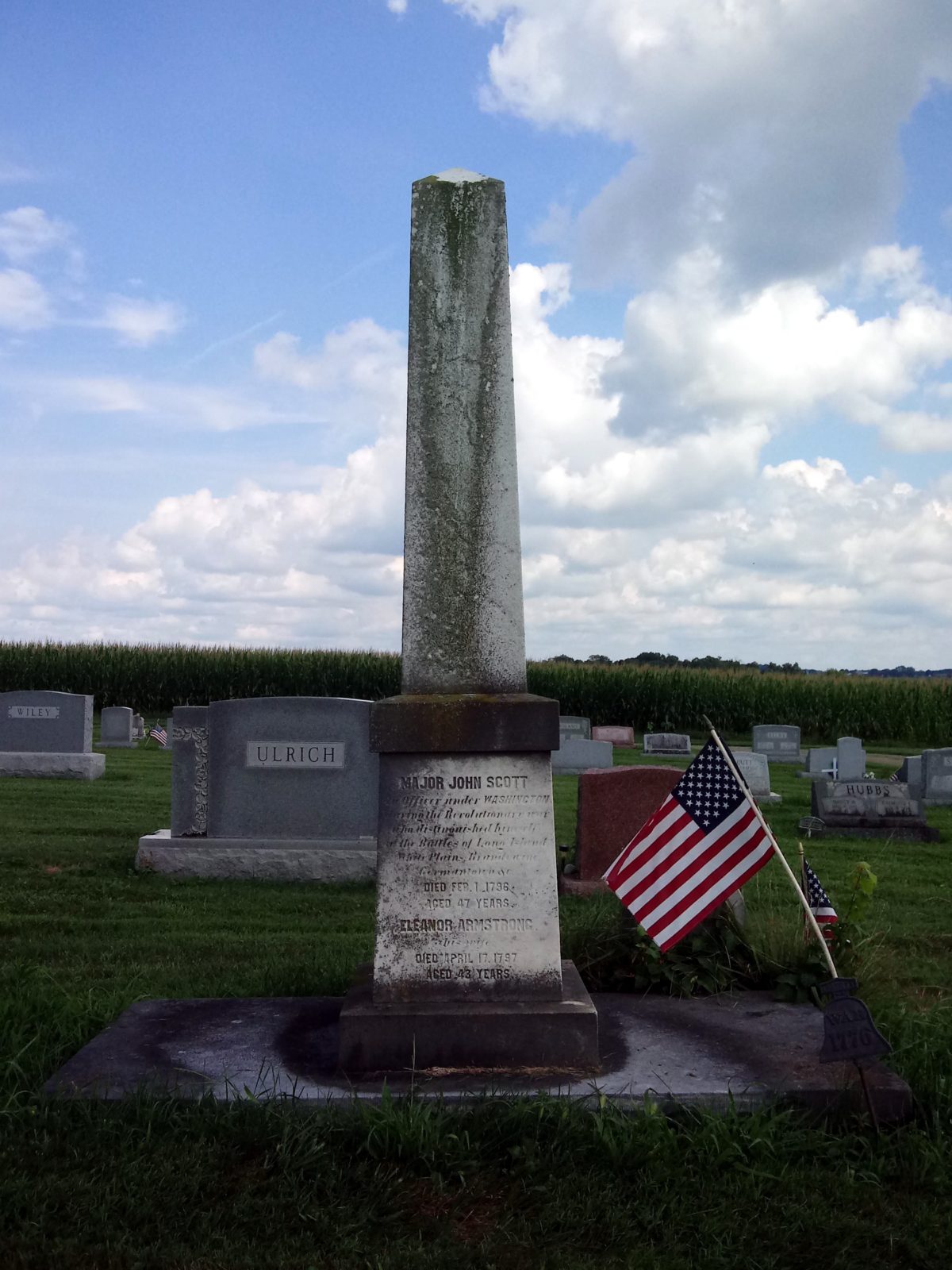
Monument for Major John Scott, Revolutionary War veteran 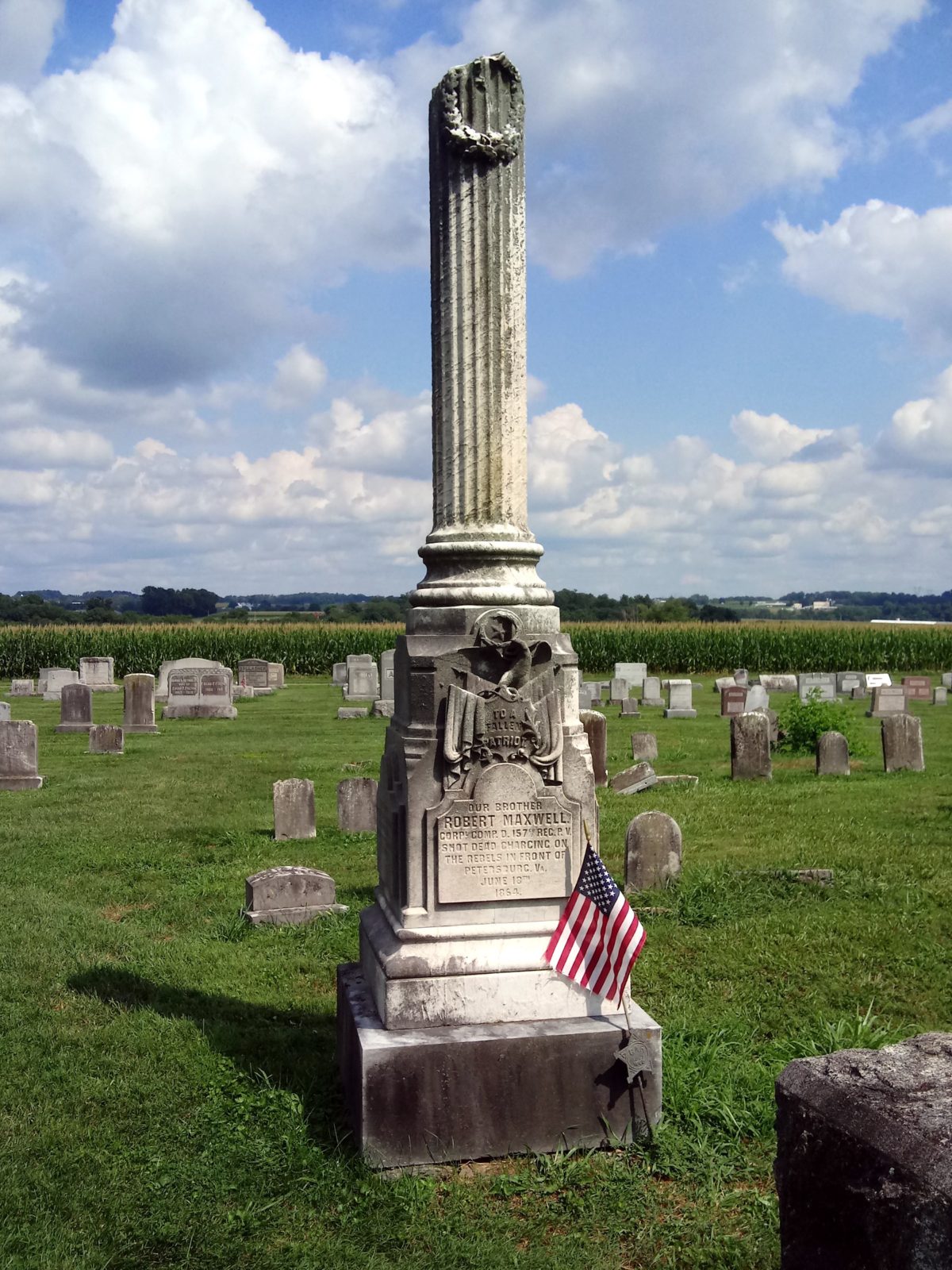
Monument for Robert Maxwell, killed in action at the Battle of Petersburg
Another impressive war monument belongs to Robert Maxwell, a Civil War soldier who died in the fighting around Petersburg. The symbolism of the monument is unmissable — the eagle, the broken column representing a life cut short, the wreath.
At 3 o’clock, the bells of the church rang — well, a recording of bells played — and that was followed by ten minutes of songs, some religious, some patriotic, played on bells: “O, For a Thousand Tongues to Sing,” “The Battle Hymn of the Republic,” “The Star-Spangled Banner.” There was a rustic charm to it.
There were Gibsons buried here, too. Are they relations?
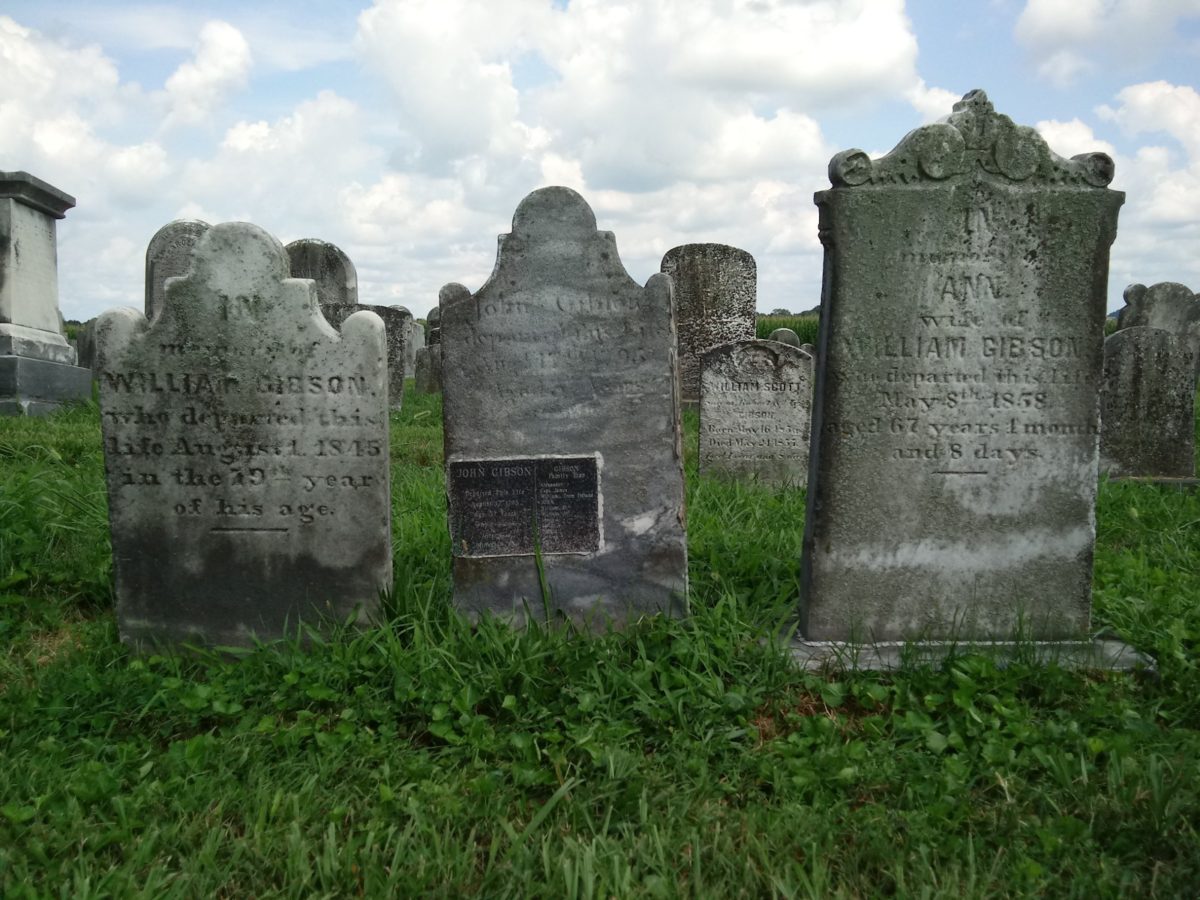
I have no idea, but probably not. I’d expect to find Hugh Boyd Gibson’s ancestors and relations in Cecil County. Yes, my ancestors moved back and forth across the border for centuries, but I wouldn’t expect to find my Gibson ancestors here.
If the trips to Millersville and from Millersville to Little Britain were pleasant and quick, the journey home from Little Britain to Yoe was interminable. It was certainly the longest leg of the journey, taking a solid hour. I met several Amish buggies on the way — including one on the bridge across the Susquehanna — and I felt that I was driving forever. When I got home I was exhausted, as much from the drive home as exploring the two cemeteries.
Visiting the cemetery in Abbottstown is a possibility, perhaps later in the year.
